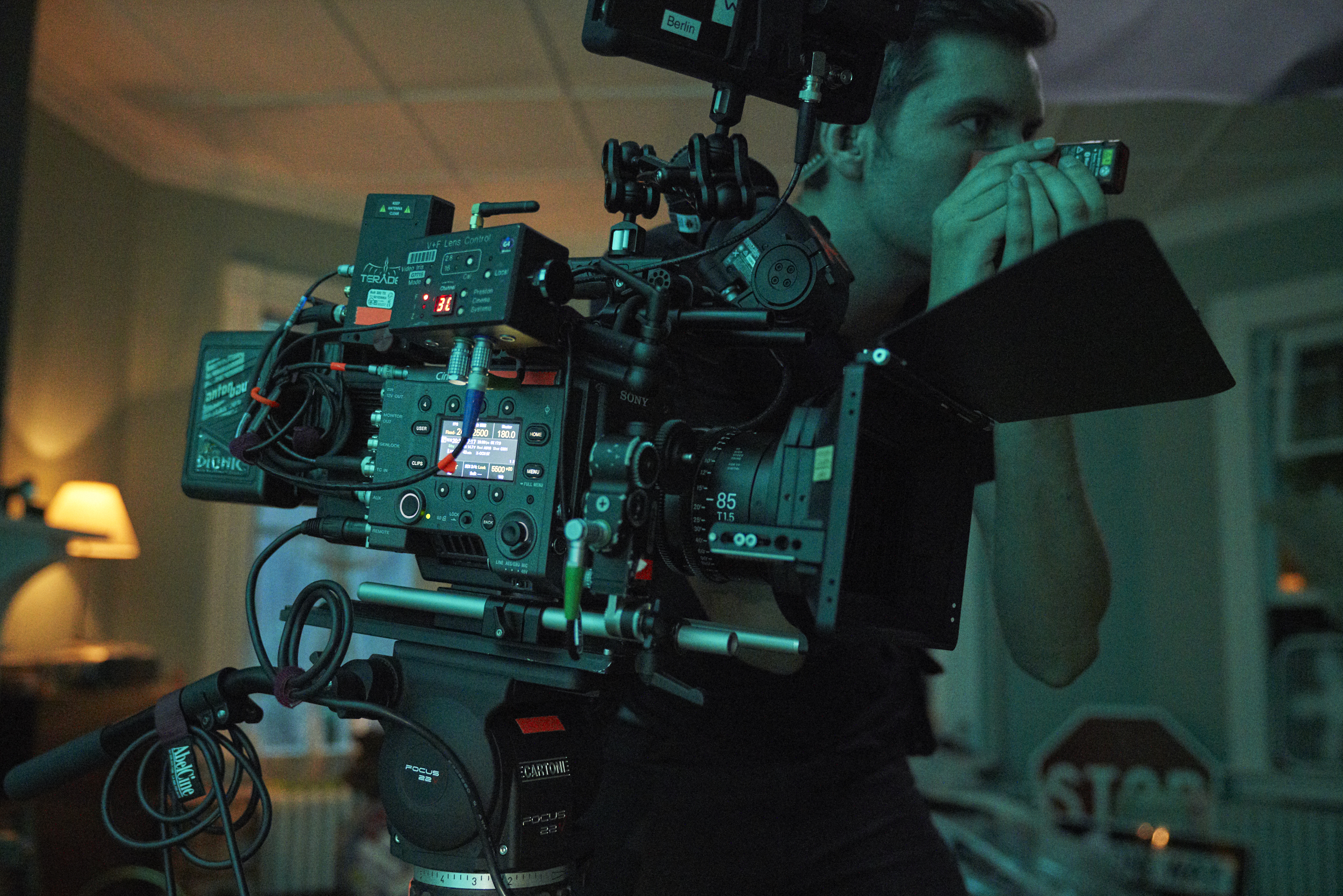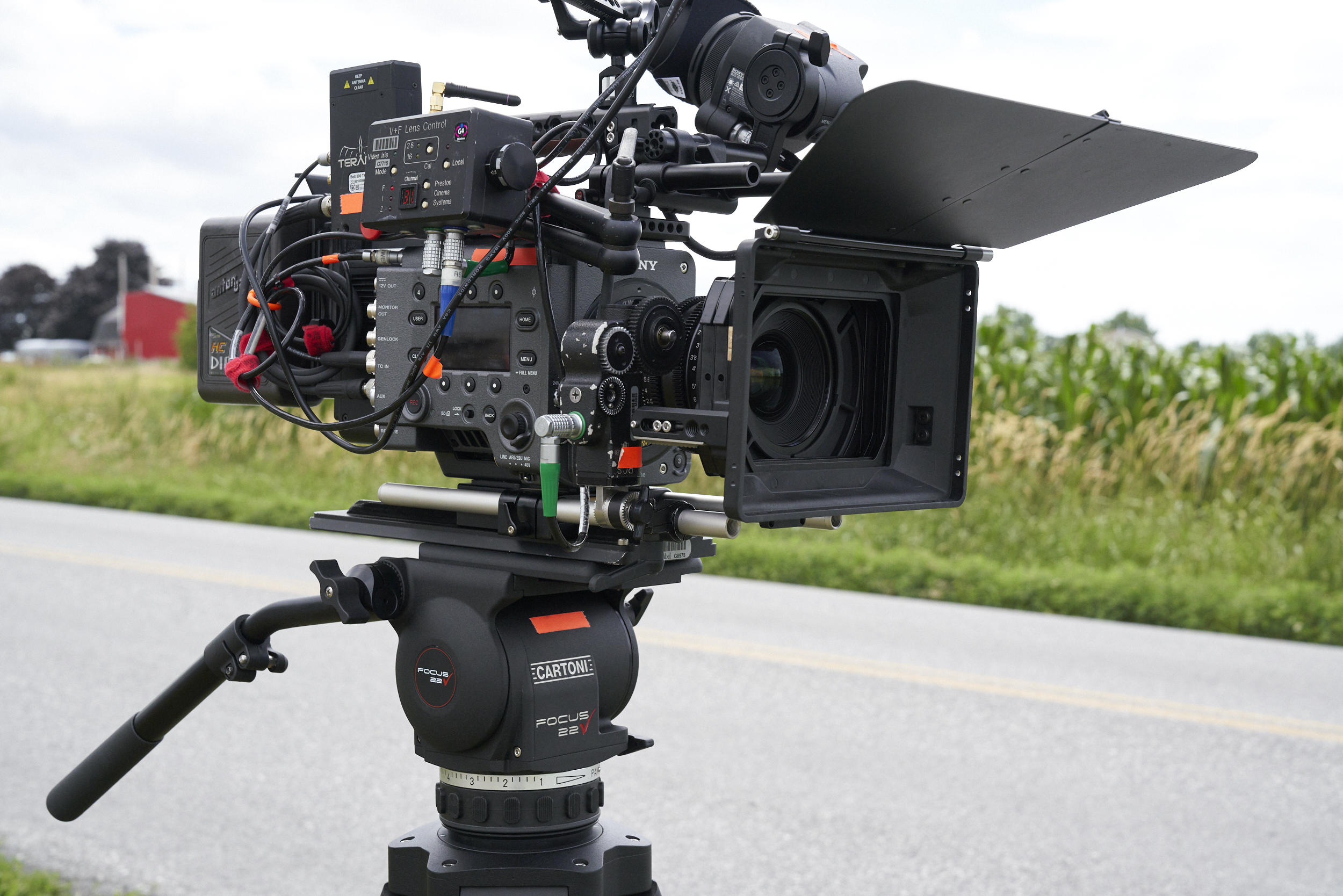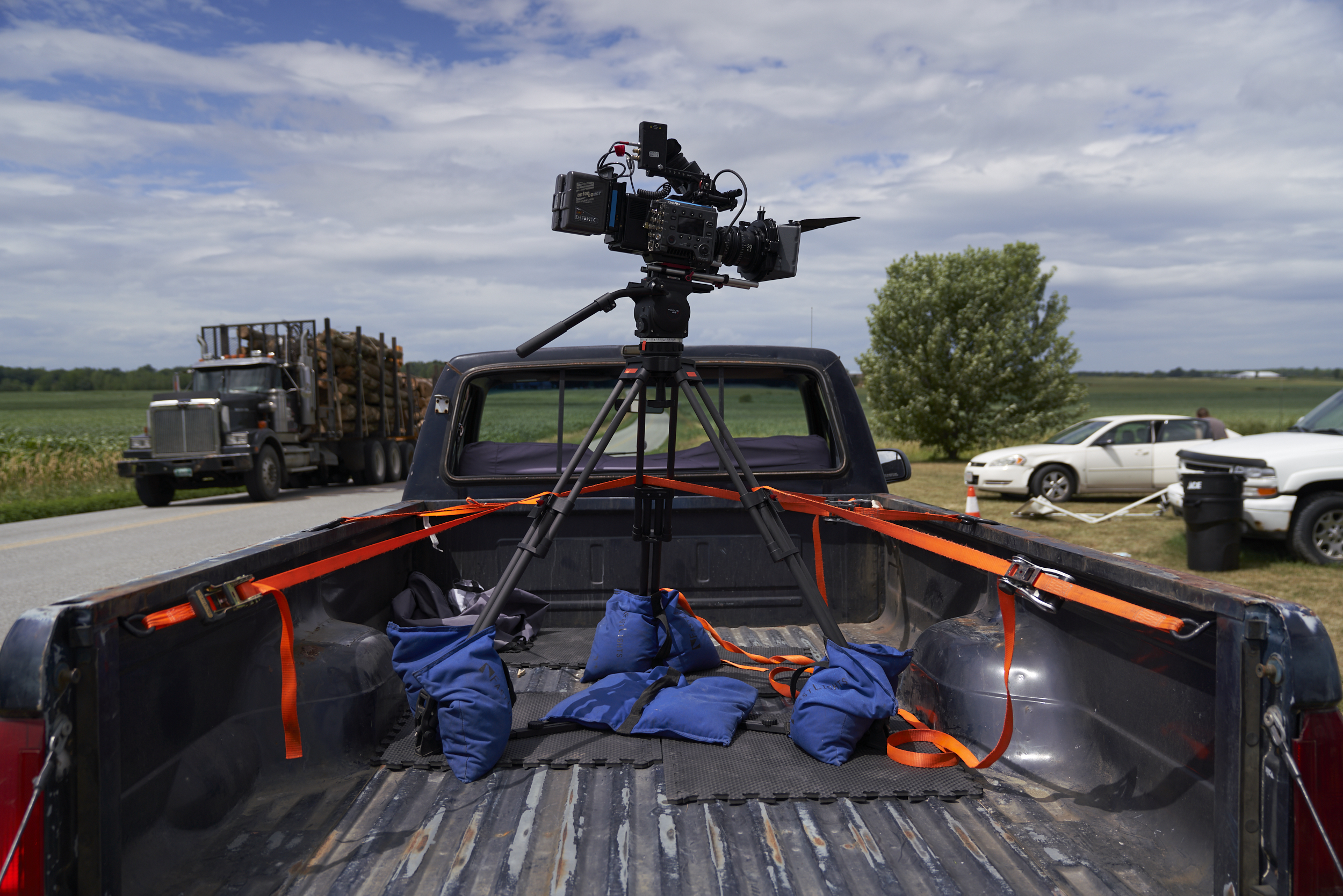Celeb Photographer, Jeff Berlin, chooses Cartoni for latest short film, Stormchaser

Before he ever shot video, cinematographer and Sony Artisan Jeff Berlin had already established himself as an in-demand photographer in the worlds of fashion and celebrity portraits. He’s photographed celebrities like Kurt Russell and Patrick Dempsey, and over the years he’s collaborated with top fashion magazines and brands like Vogue Italia and L’Oreal.
Berlin got his start by apprenticing for working photographers.
“I got started in college; I never went to photo school. I began as an assistant, learning everything I could. As an assistant working on set, one learns in a practical setting the things that schools can’t really teach, like how to deal with clients, for one. After shooting for a few magazines early in my career in New York, I moved to Milan and spent six years working there and in Paris,” Berlin explains.
Berlin soon established himself in the fashion world for his keen eye, distinctive style, and easy manner. He based himself in Europe and NYC, collaborating with numerous editions of U.S. and International magazines and commercial clients.

Celeb photographer turned cinematographer, Jeff Berlin, goes behind the scenes of his latest short film project Stormchaser. he gives us a first look at the trailer and why he chooses Cartoni on set.

Celeb photographer turned cinematographer, Jeff Berlin, goes behind the scenes of his latest short film project Stormchaser. he gives us a first look at the trailer and why he chooses Cartoni on set.
“Film was never on my radar but I was burning out a bit on photography,” he said. In photography, you wear different hats – you do it all, light, DP and direct. It was great training for what I’m doing now, but after years shooting in Europe and NYC I was growing tired of fashion and celebrity work.”
To escape and keep fresh, Berlin, also an airplane pilot, began writing about aviation for magazines and shooting the photos for his stories, and he started to shoot rodeo as well. But it wasn’t long before the fashion world came calling again.
“Six years ago, I got a call from a producer friend. He asked, ‘do you want to DP and direct a fashion brand video for Norma Kamali,” Berlin recounts. “Well, I didn’t really even know what a DP did, but I quickly said yes. I remember then calling a friend who was an actual DP to find out what a DP does. A couple days later I got a quick DP 101 over an espresso.”
The smarter way to stay on top of broadcasting and cable industry. Sign up below
The film, "KamaliKulture" Empowerment Film, was the first of Berlin’s transition from photo to video.
“One piece of advice my DP friend gave me was to surround myself with the best crew I could find, so for this project, I did exactly that. That was good advice and what I would do when shooting fashion or aviation. I only wanted the best stylists, hair and makeup artists, the best photo ship and formation plots, on my projects. We shot the film on a Sony NEX-FS700, which was the perfect choice then because of its high frame rate capability, but it was also a camera I didn’t really know how to operate. So, on a high-profile project like this, I crewed up, was able to focus on the creative and not get bogged down in the technical. I didn’t really care that I didn’t know how to operate that camera, and it didn’t matter, we had people for that. I did , however, know exactly how I wanted the video to look. I knew what I wanted my frames to look like and how I wanted it lit. I knew exactly how I wanted my models to look, like I always did when shooting stills.”
The film sparked a revelation in Berlin, who began to pour himself into video and the motion picture. As a Sony Artisan of Imagery, Berlin had some access to cameras like the F55 and credits Sony’s Digital Motion Picture Center (DPMC) for helping to facilitate some of his education.
“For anyone starting out with Sony’s CineAlta line of motion picture cameras, Sony’s DPMC is a great resource for filmmakers who want to learn about them and the technology they facilitate,” he adds.
Since then, Berlin has worked on numerous short films and promos for everything from the Professional Bull Riders (PBR) Association, to GT Bicycles, to Sony Electronics. For Berlin, it was all about getting on set and getting as much practical experience as possible.
Berlin’s latest work is a short film, Stormchaser. The film is about a hard-luck woman who is struggling as a door to door salesperson in the Midwest. The character has a revelation about how to increase her sales.
[embed]https://vimeo.com/313949801[/embed]
“It’s a great script that became a fun film, now submitting to festivals. It’s a bit like [the 1992 American drama] Glengarry Glen Ross mixed with a love story. We shot the film in Vermont, which played a great Midwest, in July of 2018.”
He adds, “We shot the film in 6K on my full-frame Sony VENICE camera and Sigma full-frame cine lenses. I built up my camera with Wooden Camera support gear and the Cartoni Focus 22 with SDS legs was the perfect set of sticks for the VENICE.”
“I chose the Cartoni Focus 22 because I was familiar with it from past projects, and because I like it. The Focus 22 is easy to work with. It's very solidly built and extremely smooth. This was the perfect camera support for this project.”
The Cartoni Focus 22 is specifically designed to support the wide variety of new digital cinema cameras, handling a broad range of payloads from 3 kg (6.5 lbs) to 22 kg (48.5 lbs). Cartoni’s SDS or Smart Stop tripod legs are built for speed and can set up or fold in an instant. Thanks to a single lever located on each tripod leg, camera operators can deploy all legs simultaneously. Rugged and easy to operate, Berlin put the performance of the Focus 22 to the test during one shot where the tripod was set up for a shot in the back of a moving pick-up truck. Cartoni’s SDS legs are built for speed and can set up and fold in an instant.
“I fell in love with those SDS legs. They’re a smart, robust design and are intuitive and easy to use. A tripod is an indispensable piece of gear so I’m pretty picky when it comes to them.”
Reflecting on his transition from stills to motion, Berlin says, “working in the new, to me, medium of motion pictures has been a lot of fun. To be able to translate into motion the types of images I had been making as a still photographer has also been very interesting, and it’s required that I learn a whole new language, including how and when to move the camera, for example. That’s just not intuitive to a still shooter, especially one with a studio background like me. What’s really helped me with that is really knowing the script and understanding the scene you’re shooting. Understanding the motivation of the character in that scene, and then using camera movement to help move that story forward. Ultimately, for as similar one would think they would be, shooting stills and video, the differences are manifest and I’ve been enjoying learning new ways to realize my creative vision.
To see the Cartoni Focus 22 with SDS legs in person, join Cartoni and Manios Digital at NAB 2019, Booth C9020. Manios Digital is the exclusive US distributor of Cartoni professional camera supports.
